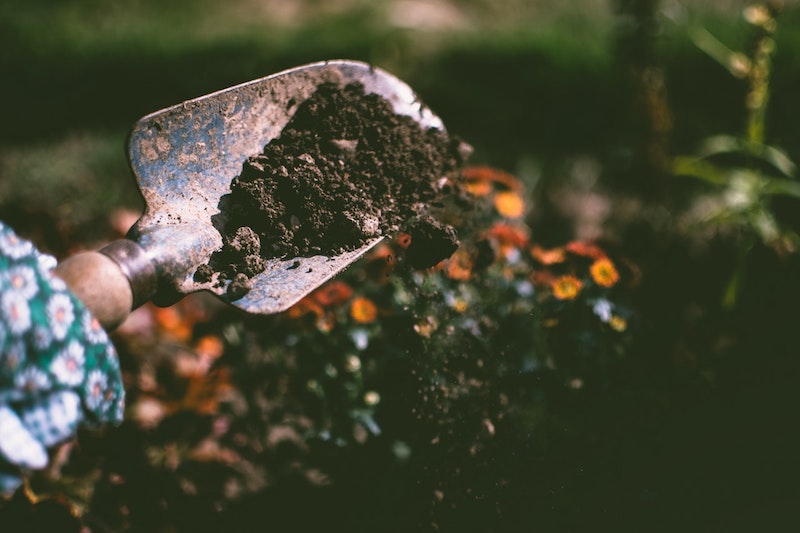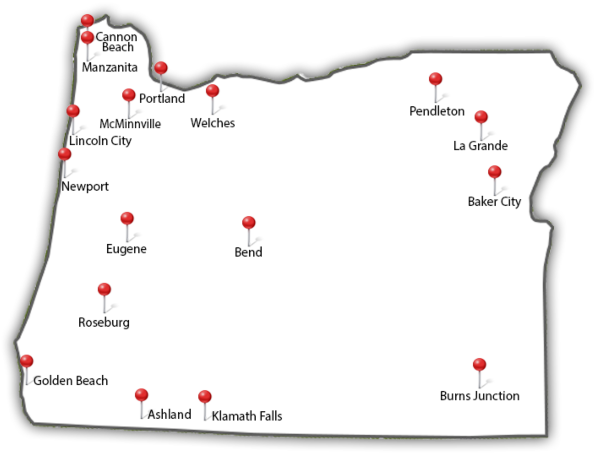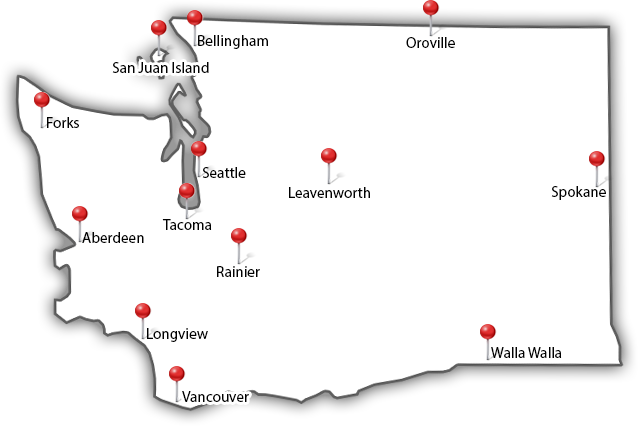Tips for Landscaping Around Trees

Trees are one of the most beautiful landscape elements out there. They look beautiful, create shade, and bring a sense of calm and relaxation to any outdoor area.
The only downside is that the area around the base of a tree is often tricky to accommodate. If you leave your tree to its own devices, it’s likely to suck up all the water in the soil around its roots. Plus, the shade from its branches makes it hard for plants underneath to get enough sunlight to grow.
This is no problem for the health of your tree, but a ring of bare dirt might not fit your landscaping vision! So how do you beautify the area around a tree without compromising its health?
Here’s what we recommend:
Don’t add or remove too much dirt

It’s important to maintain the level of soil around your tree’s trunk. Adding too much soil starves the roots of oxygen and can make the bark rot. In extreme cases, it can even slowly kill the tree.
If you need to add some soil, leave a ring of empty space (about 3-6 inches) between the trunk and the new soil. Then try to limit the amount of new soil you add to about 3 inches deep.
Choose the right plants near your tree
If you want to fill that empty-looking ring of dirt with plants, make sure you choose ones that can handle the conditions under your tree.
Evergreens are everywhere here in the Pacific Northwest, and many of them are thick enough to create a densely shaded area near the trunk where almost no sunlight gets through. To make things even more difficult, they also act like umbrellas, blocking rainwater from falling on plants near the trunk. Other trees, like maples, often do allow dappled sunlight through their branches, creating an area of filtered shade below.
Before choosing plants for under your tree, go outside on a sunny day and see how much sunlight comes through the branches. If it’s very shaded, look for plants that thrive in low-light conditions, like ferns and hostas.
When it comes to deciduous trees (which lose their leaves in autumn) consider flowers that bloom in the spring. These work well because deciduous trees let more sunlight through in the spring before they’ve fully leafed out for the summer.
Be careful with your tree’s roots and bark

Your tree’s bark is its protective barrier against disease and the elements. When you’re landscaping or gardening near trees, try not to nick or chip away at the bark (especially while weed whacking).
Look out for tree roots, too. Some trees have shallow roots hidden just beneath the earth so are extra easy to damage accidentally. Trees that are likely to have lots of shallow roots include:
- Willows
- Birches
- Beeches
- Maples
- Ashes
- Elms
Is it possible to plant near trees with shallow roots?
It’s OK to place other plants around these types of trees, as long as you choose shallow-rooted plants that will compete well with the tree. Do a little research about what plants coexist well with your specific tree, or ask us. We’re always available to answer your tree care questions! In the meantime, these are a few plants that often do well near shallow-rooted trees, like maples:
- Ferns
- Hostas
- Low-growing perennial plants that like shade
- Spring-blooming bulbs
During the process of planting, be on the lookout for shallow large or medium-sized roots. If you encounter one while digging a hole, simply refill the hole and move to a nearby spot.
A few more simple landscaping ideas
Try a raised flower bed
One tried and true way to create a beautiful display around your tree without damaging it is with a raised bed. Build your raised bed like a donut around your tree’s trunk, but leave a gap of at least 1-3 feet between the trunk and the bed’s inside wall. This is to avoid smothering the tree and damaging the roots.
Rocks don’t need sunlight!
There are many other ways to landscape around your trees without planting anything. Decorative garden accents require almost no upkeep and don’t need sunlight or water. Here are a few options:
- A decorative rock pattern
- A fairy garden
- Landscape lights (which also help you navigate your yard safely at night)

Consider replacing grass with native plants
If you love a more natural-looking yard and like the idea of a low-maintenance landscape, consider getting rid of your lawn and sticking to native plants. A more rustic landscape aesthetic works well with the earthy, uneven area around trees. Here are a few of the many benefits of a grass-free landscape:
- Helps you conserve water (especially in the summer)
- Requires less upkeep
- Supports your local ecosystem
- Makes it easy to preserve your trees’ health
Be extra careful with young trees
Does your landscape have trees that were planted less than 5 years ago? Keep in mind that young trees don’t yet have the defenses that older trees have, and even small plants will compete with them for water and nutrients.
Be extra careful when landscaping around these little trees. In fact, it’s best to avoid planting anything around them until they’re bigger and stronger. Instead, make sure you mulch them regularly and manually remove weeds that grow near the base.
Prune your tree regularly
Keeping your landscape beautiful and healthy involves a little maintenance, not just to the area around your tree, but also to the tree itself. Here are some benefits of proper tree pruning:
- Prevents branches from getting weighed down and falling on your lovely landscape — or even worse, your house!
- Encourages some sunlight and water to come through and nourish anything growing under the tree’s canopy
- Keeps your tree strong and healthy
- Improves the overall look of your landscape
Keep in mind that improper pruning can actually do more harm than good. A poor pruning job puts your tree at risk for diseases. In the worst cases, it can even destabilize the tree, putting your property at risk.
That’s why we always recommend hiring a professional arborist who has the tools and experience to prune safely. This also ensures you get an even, symmetrical result that improves the appearance of your landscape.

Need help with landscaping, pruning, or other tree care?
We’re here to help. Northwest Arbor-Culture offers complete tree care and landscape services in Portland, Vancouver, and surrounding areas.
Contact us to learn more or call us at (503) 538-8733 for a free estimate.
blog comments powered by Disqus










